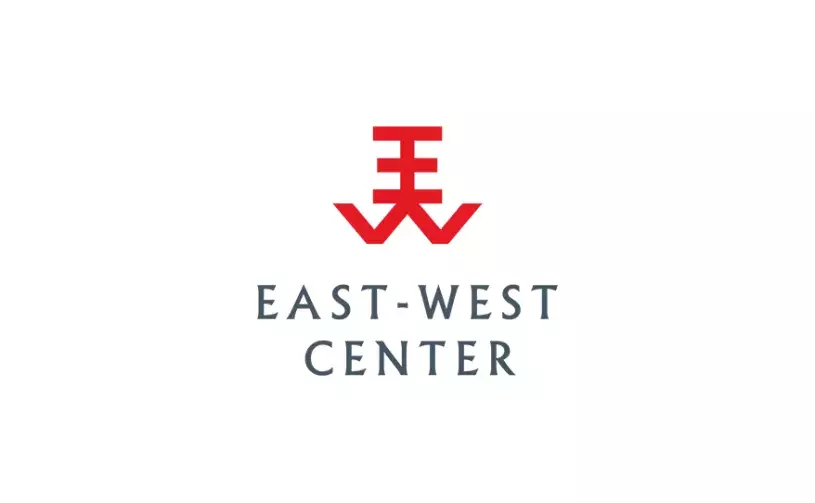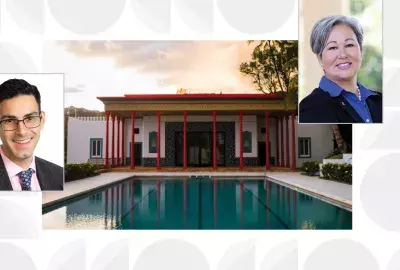Error message

By Sumeet Saksena, Chinh Cong Tran, and Jefferson Fox
HONOLULU (May 24, 2019)—All over the world, more than three billion people—particularly in rural areas—cook on open fires or inefficient stoves that burn wood, coal, or crop residues. Burning these fuels releases potentially deadly gases and particles into homes that are often poorly ventilated.
The resulting household air pollution has been linked to low birth weights, pneumonia in young children, and chronic obstructive pulmonary disease, ischemic heart disease, stroke, tuberculosis, and cataracts in adults. Altogether, the World Health Organization estimates that household air pollution from cooking fuel kills more than four million people every year and sickens millions more.
Since 1990, Vietnam has achieved one of the fastest rates of economic growth in the world, contributing substantially to the health and well-being of the population. Between 1960 and 2015, life expectancy at birth climbed from 59 to 76 years. Today, most households have access to electricity, and most own a television. As households become more affluent, they also tend to make the transition from cooking with wood or crop residues to a cleaner fuel, most often liquid natural gas (LNG).
As in many other countries, urban and rural populations in Vietnam are making this important health transition at a very different pace. In 2005, 69 percent of urban households cooked with LNG or electricity, while only 17 percent of rural households had made the transition.
Although urban households tend to have higher incomes, families in rural areas are also benefiting from the nation’s rapid economic growth. So why are rural households lagging so far behind in the transition to cleaner cooking fuel?
Based on the government’s Rural, Agricultural, and Fisheries Censuses of 2006 and 2011, we looked at three household fuel choices—LNG, wood, and a category labeled “miscellaneous fuels,” which mainly includes crop residues—across Vietnam’s approximately 7,561 fully rural communes.
Several factors changed over the five-year period between the two censuses. For one thing, Vietnam has conducted a highly successful tree-planting program, based on small plantations managed by rural households and communities. In addition to improving biodiversity and carbon sequestration, successful programs have increased the incomes of rural households that raise trees to sell as timber.
One unforeseen consequence of this successful program has been an increase in the supply of fuelwood. In addition to selling timber, households that are raising trees often sell branches, tops, and bark as fuelwood, and they have access to these fuels themselves.
Indeed, both censuses found that wood was the primary cooking fuel in rural areas. The use of wood for cooking actually increased over the five-year period—from 66 percent of rural households in 2006 to 71 percent in 2011. The use of natural gas for cooking nearly doubled over the same period—from 12 percent to 22 percent—but as of 2011 many more households still used wood than LNG.
The use of wood for cooking appeared to be associated primarily with the availability of different types of fuel in a community. As would be expected, households in communes with large areas under forests and tree plantations were more likely than others to use wood as their primary cooking fuel. This suggests that the small-holder tree plantation program in Vietnam may have slowed down the transition to cleaner cooking fuels —at least in the short-term.
Households that were far from a national highway, a market, or the nearest town were also more likely to use wood for cooking than were households in communes with more developed infrastructure. At the same time, wealthier households in rural communes were no more likely to cook with natural gas than their poorer neighbors. This suggests that within remote communities, even the wealthier families find it difficult to switch to a cleaner fuel for cooking because supplies of wood are plentiful while natural gas is simply not available.
In poor countries around the world, decades of effort to reduce indoor air pollution by introducing improved cook stoves have made only modest progress. Recently, a paradigm shift has been suggested to move from “making the available clean” to “making the clean available,” in other words, improving access to LNG and other clean cooking fuels in rural areas.
The findings reported here support such a shift of emphasis. In places with few markets and poor roads, a high proportion of households use readily available, but unhealthy cooking fuels. This suggests that efforts to improve health by reducing indoor air pollution will require infrastructure investments to make clean fuels more widely available at the community level.
Investments in transportation and market infrastructure can potentially reduce the exposure to indoor air pollution of an entire community. The focus should be on the truly rural areas where infrastructure is most lacking. This would appear to be an extremely cost-effective way to achieve large-scale health benefits, both in Vietnam and in other countries at a similar stage of economic development.
The unforeseen consequence of Vietnam’s tree-planting program—which seems to be slowing the transition to cleaner cooking fuels—may also be occurring in other countries. Vietnam’s experience suggests that when governments encourage farmers to plant trees they should consider reducing the possibility of negative health effects by making investments in rural infrastructure at the same time.
###
Sumeet Saksena is a Senior Fellow at the East-West Center. He can be reached at [email protected]. Chinh Cong Tran is Vice-Director of the Center for Community Support Development Studies in Hanoi, Vietnam. He can be reached at [email protected]. Jefferson Fox is Director of the Research Program at the East-West Center and can be reached at [email protected].
Download a pdf version of this Wire article.
The East-West Wire is a news, commentary, and analysis service provided by the East-West Center in Honolulu. All or any part of the Wire content may be used by media with attribution to the East-West Center or the person quoted. To receive Wire articles via email, subscribe here. For links to all East-West Center media programs, fellowships and services, see EastWestCenter.org/Journalists.
The full list of East-West Wires produced by the Research Program is available on the East-West Center website at EastWestCenter.org/Research-Wire. For more on the East-West Center Research Program, see EastWestCenter.org/Research.
The East-West Center promotes better relations and understanding among the people and nations of the United States, Asia, and the Pacific through cooperative study, research, and dialogue.
Series editors:
Derek Ferrar
[email protected]
Sidney B. Westley
[email protected]
The views expressed are those of the author and do not necessarily reflect the policy or position of the East-West Center or any organization with which the author is affiliated.
By Sumeet Saksena, Chinh Cong Tran, and Jefferson Fox
HONOLULU (May 24, 2019)—All over the world, more than three billion people—particularly in rural areas—cook on open fires or inefficient stoves that burn wood, coal, or crop residues. Burning these fuels releases potentially deadly gases and particles into homes that are often poorly ventilated.
The resulting household air pollution has been linked to low birth weights, pneumonia in young children, and chronic obstructive pulmonary disease, ischemic heart disease, stroke, tuberculosis, and cataracts in adults. Altogether, the World Health Organization estimates that household air pollution from cooking fuel kills more than four million people every year and sickens millions more.
Since 1990, Vietnam has achieved one of the fastest rates of economic growth in the world, contributing substantially to the health and well-being of the population. Between 1960 and 2015, life expectancy at birth climbed from 59 to 76 years. Today, most households have access to electricity, and most own a television. As households become more affluent, they also tend to make the transition from cooking with wood or crop residues to a cleaner fuel, most often liquid natural gas (LNG).
As in many other countries, urban and rural populations in Vietnam are making this important health transition at a very different pace. In 2005, 69 percent of urban households cooked with LNG or electricity, while only 17 percent of rural households had made the transition.
Although urban households tend to have higher incomes, families in rural areas are also benefiting from the nation’s rapid economic growth. So why are rural households lagging so far behind in the transition to cleaner cooking fuel?
Based on the government’s Rural, Agricultural, and Fisheries Censuses of 2006 and 2011, we looked at three household fuel choices—LNG, wood, and a category labeled “miscellaneous fuels,” which mainly includes crop residues—across Vietnam’s approximately 7,561 fully rural communes.
Several factors changed over the five-year period between the two censuses. For one thing, Vietnam has conducted a highly successful tree-planting program, based on small plantations managed by rural households and communities. In addition to improving biodiversity and carbon sequestration, successful programs have increased the incomes of rural households that raise trees to sell as timber.
One unforeseen consequence of this successful program has been an increase in the supply of fuelwood. In addition to selling timber, households that are raising trees often sell branches, tops, and bark as fuelwood, and they have access to these fuels themselves.
Indeed, both censuses found that wood was the primary cooking fuel in rural areas. The use of wood for cooking actually increased over the five-year period—from 66 percent of rural households in 2006 to 71 percent in 2011. The use of natural gas for cooking nearly doubled over the same period—from 12 percent to 22 percent—but as of 2011 many more households still used wood than LNG.
The use of wood for cooking appeared to be associated primarily with the availability of different types of fuel in a community. As would be expected, households in communes with large areas under forests and tree plantations were more likely than others to use wood as their primary cooking fuel. This suggests that the small-holder tree plantation program in Vietnam may have slowed down the transition to cleaner cooking fuels —at least in the short-term.
Households that were far from a national highway, a market, or the nearest town were also more likely to use wood for cooking than were households in communes with more developed infrastructure. At the same time, wealthier households in rural communes were no more likely to cook with natural gas than their poorer neighbors. This suggests that within remote communities, even the wealthier families find it difficult to switch to a cleaner fuel for cooking because supplies of wood are plentiful while natural gas is simply not available.
In poor countries around the world, decades of effort to reduce indoor air pollution by introducing improved cook stoves have made only modest progress. Recently, a paradigm shift has been suggested to move from “making the available clean” to “making the clean available,” in other words, improving access to LNG and other clean cooking fuels in rural areas.
The findings reported here support such a shift of emphasis. In places with few markets and poor roads, a high proportion of households use readily available, but unhealthy cooking fuels. This suggests that efforts to improve health by reducing indoor air pollution will require infrastructure investments to make clean fuels more widely available at the community level.
Investments in transportation and market infrastructure can potentially reduce the exposure to indoor air pollution of an entire community. The focus should be on the truly rural areas where infrastructure is most lacking. This would appear to be an extremely cost-effective way to achieve large-scale health benefits, both in Vietnam and in other countries at a similar stage of economic development.
The unforeseen consequence of Vietnam’s tree-planting program—which seems to be slowing the transition to cleaner cooking fuels—may also be occurring in other countries. Vietnam’s experience suggests that when governments encourage farmers to plant trees they should consider reducing the possibility of negative health effects by making investments in rural infrastructure at the same time.
###
Sumeet Saksena is a Senior Fellow at the East-West Center. He can be reached at [email protected]. Chinh Cong Tran is Vice-Director of the Center for Community Support Development Studies in Hanoi, Vietnam. He can be reached at [email protected]. Jefferson Fox is Director of the Research Program at the East-West Center and can be reached at [email protected].
Download a pdf version of this Wire article.
The East-West Wire is a news, commentary, and analysis service provided by the East-West Center in Honolulu. All or any part of the Wire content may be used by media with attribution to the East-West Center or the person quoted. To receive Wire articles via email, subscribe here. For links to all East-West Center media programs, fellowships and services, see EastWestCenter.org/Journalists.
The full list of East-West Wires produced by the Research Program is available on the East-West Center website at EastWestCenter.org/Research-Wire. For more on the East-West Center Research Program, see EastWestCenter.org/Research.
The East-West Center promotes better relations and understanding among the people and nations of the United States, Asia, and the Pacific through cooperative study, research, and dialogue.
Series editors:
Derek Ferrar
[email protected]
Sidney B. Westley
[email protected]
The views expressed are those of the author and do not necessarily reflect the policy or position of the East-West Center or any organization with which the author is affiliated.
East-West Wire
News, Commentary, and Analysis
The East-West Wire is a news, commentary, and analysis service provided by the East-West Center in Honolulu. Any part or all of the Wire content may be used by media with attribution to the East-West Center or the person quoted. To receive East-West Center Wire media releases via email, subscribe here.
For links to all East-West Center media programs, fellowships and services, see www.eastwestcenter.org/journalists.







